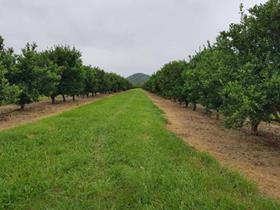
Following the acquisition of three citrus orchards in Gayndah, Queensland, Australia’s Red Rich Fruits has exported their first Murcott mandarins of the 2018 season.
Bound for China, the initial shipment is one of several Red Rich Fruits will make to the Asian nation over the course of the campaign, according to managing director Matthew Palise.
“We have two main mandarin varieties on our orchards, and our Murcott mandarins have been especially popular overseas,” Palise explained. “We’ve established a programme to send the whole crop into China.”
Red Rich’s three Queensland citrus orchards, purchased for an undisclosed sum in April 2018, primarily produce Imperial and Murcott mandarins. The Murcott harvest commenced in the first week of July, with a solid crop coming through.
“Fruit set this year was great with 70-80 per cent fruit on the trees,” Palise said. “We’ve had plenty of cold nights and warm days recently, which have been perfect to bring out a high colour in the fruit, and we’ve been getting some excellent quality right across the orchard.”
The Murcott campaign follows on from a highly successful first Imperial harvest for the company.
“We had a strong start to the 2018 Imperial season, with ideal growing conditions in the lead up to Easter when we started picking,” said Palise. “We were seeing consistently good volumes of rain and good sunshine, so we were getting great fruit and good size.
“Our first crop of Imperial mandarins was all sold domestically, with the bulk of the product selling through Coles supermarkets.”
Planted on the banks of the Burnett River, Red Rich’s three orchards in Gayndah are spread across 150ha of land. The acquisition also included a 1530m2 packing shed, two cool rooms, full irrigation infrastructure, and generous water allocations.
Palise said the deal signals the beginning of a new phase of growth for the family-owned grower-packer-marketer.
“We pride ourselves on supply chain integration and see this as a great strategic fit, enabling us to harvest and sell our own fruit year-round, across the pome-fruit, stonefruit and citrus categories” he explained.



